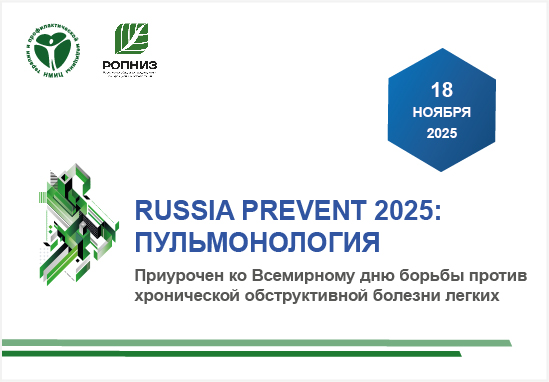THE INFLUENCE OF PATHOLOGICAL CARDIO-ANKLE VESSEL INDEX ON ANNUAL RESULTS OF CORONARY BYPASS IN PATIENTS WITH ISCHEMIC HEART DISEASE
https://doi.org/10.15829/1728-8800-2015-3-18-24
Abstract
Aim. To study interrelations of cardio-ankle vessel index (CAVI) with annual results of coronary bypass grafting (CBG) in patients with ischemic heart disease (CHD).
Material and methods. On the first stage, we included 356 patients after CBG. All patients underwent CAVI assessment. In a year we analyzed the condition of 341 patient, and selected patients into groups: I (n=221) — CAVI >9,0 and II (n=120) group — CAVI <9,0. Groups were comparable by the prevalence of cardiovascular events: death, myocardial infarction, stroke, hospitalization, angina onset.
Results. In evaluation of the results in long-term period after operation, the mortality was higher in the II group and reached 3,3% relative to I group — 2,3% cases, resp. (p=0,55). In general patients with pathologic CAVI had more common negative prognosis during one year in 34 (28,3%) cases, comparing to patients with normal CAVI — 42 (19,0%) of patients (p=0,048). Probability of combined endpoint occurrence (CEP) increased with the increase of CAVI (p=0,04), with the existence of bilateral carotid stenosis (p=0,01), and in the relation of CBG with therombectomy (p=0,04). In multifactor analysis an independent relation with the risk of CEP was found for bilateral carotid arteries stenosis and increase of CAVI (OR 2,5; 95% CI 1,26-5,08; p-0,008 and OR 1,7; 95% CI 1,0-2,9; p=0,02, resp.).
Conclusion. The pathological CAVI was associated with higher prevalence of CEP during one year. In multifactorial analysis an independent influence on prognosis in this kind of patients had CAVI and presence of bilateral carotid stenosis. The assessment of CAVI is aimfull to perform before CBG to find out the patients with increased risk of cardiovascular events.
About the Authors
A. N. SuminRussian Federation
A. V. Shcheglova
Russian Federation
T. B. Bashtanova
Russian Federation
O. L. Barbarash
Russian Federation
References
1. Ishisone T, Koeda Y, Tanaka F, et al. Comparison of utility of arterial stiffness parameters for predicting cardiovascular events in the general population. Int Heart J 2013; 54(3): 160-5.
2. Kanamoto M, Matsumoto N, Shiga T, et al. Relationship between coronary artery stenosis and cardio-ankle vascular index (CAVI) in patients undergoing cardiovascular surgery. J Cardiovasc Dis Res 2013; 4(1): 15-9.
3. Masugata H, Senda S, Inukai M, et al. Association between left ventricular hypertrophy and changes in arterial stiffness during hypertensive treatment. Clin Exp Hypertens 2014; 36(4): 258-62.
4. Sumin AN, Karpovich AV, Barbarash OL, et al. Assessment of cardio-ankle vascular index in patients with coronary heart disease: the influence of peripheral atherosclerosis. Cardiovascular Therapy and Prevention 2013; 12(5): 34-9. Russian (Сумин А. Н., Карпович А. В., Барбараш О. Л. и др. Оценка сердечно-лодыжечного сосудистого индекса у больных ишемической болезнью сердца: влияние периферического атеросклероза. Кардиоваскулярная терапия и профилактика 2013; 12(5): 34-9).
5. Aykan AC, Gokdeniz T, Bektaf H, et al. Cardio-ankle vascular index may be an important marker of silent neuronal injury after percutaneous coronary angiography and intervention: a prospective observational study on diagnostic accuracy. Anadolu Kardiyol Derg 2014 Feb 10. doi: 10.5152/akd.2014.5011. [Epub ahead of print].
6. Otsuka K, Fukuda S, Shimada K, et al. Serial assessment of arterial stiffness by cardio-ankle vascular index for prediction of future cardiovascular events in patients with coronary artery disease. Hypertens Res. 2014 Jul 10. doi: 10.1038/hr.2014.116. [Epub ahead of print].
7. Zhang C, Ohira M, Iizuka T et al. Cardio-ankle vascular index relates to left ventricular ejection fraction in patients with heart failure. A retrospective study. Int Heart J 2013; 54(4): 216-21.
8. Park JB, Park HE, Choi SY et al. Relation between cardio-ankle vascular index and coronary artery calcification or stenosis in asymptomatic subjects. J Atheroscler Thromb 2013; 20(6): 557-67.
9. Yingchoncharoen T, Limpijankit T, Jongjirasiri S, et al. Arterial stiffness contributes to coronary artery disease risk prediction beyond the traditional risk score (RAMA-EGAT score). Heart Asia 2012; 4(1):77-82.
10. Gokdeniz T, Turan T, Aykan AQ, et al. Relation of epicardial fat thickness and cardio- ankle vascular index to complexity of coronary artery disease in nondiabetic patients. Cardiology 2013; 124(1): 41-8.
11. Hu H, Cui H, Han W, et al. A cutoff point for arterial stiffness using the cardio-ankle vascular index based on carotid arteriosclerosis. Hypertens Res 2013; 36(4): 334-41.
12. Sugimoto T, Yamamoto K, Takizawa K, et al. Assessment of pulse wave velocity as a marker of post-operative cardiovascular risk in off-pump coronary artery bypass grafting patients. Kyobu Geka 2010; 63(7): 531-5.
13. Beck DT, Martin JS, Casey DP, et al. Exercise training reduces peripheral arterial stiffness and myocardial oxygen demand in young prehypertensive subjects. Am J Hypertens 2013; 26(9):1093-102.
14. Kanaki AI, Sarafidis PA, Georgianos PI, et al. Effects of low-dose atorvastatin on arterial stiffness and central aortic pressure augmentation in patients with hypertension and hypercholesterolemia. Am J Hypertens 2013; 26(5): 608-16.
15. Oberoi S, Schoepf UJ, Meyer M, et al. Progression of arterial stiffness and coronary atherosclerosis: longitudinal evaluation by cardiac CT. AJR Am J Roentgenol 2013; 200(4): 798-804.
Review
For citations:
Sumin A.N., Shcheglova A.V., Bashtanova T.B., Barbarash O.L. THE INFLUENCE OF PATHOLOGICAL CARDIO-ANKLE VESSEL INDEX ON ANNUAL RESULTS OF CORONARY BYPASS IN PATIENTS WITH ISCHEMIC HEART DISEASE. Cardiovascular Therapy and Prevention. 2015;14(3):18-24. (In Russ.) https://doi.org/10.15829/1728-8800-2015-3-18-24
























































